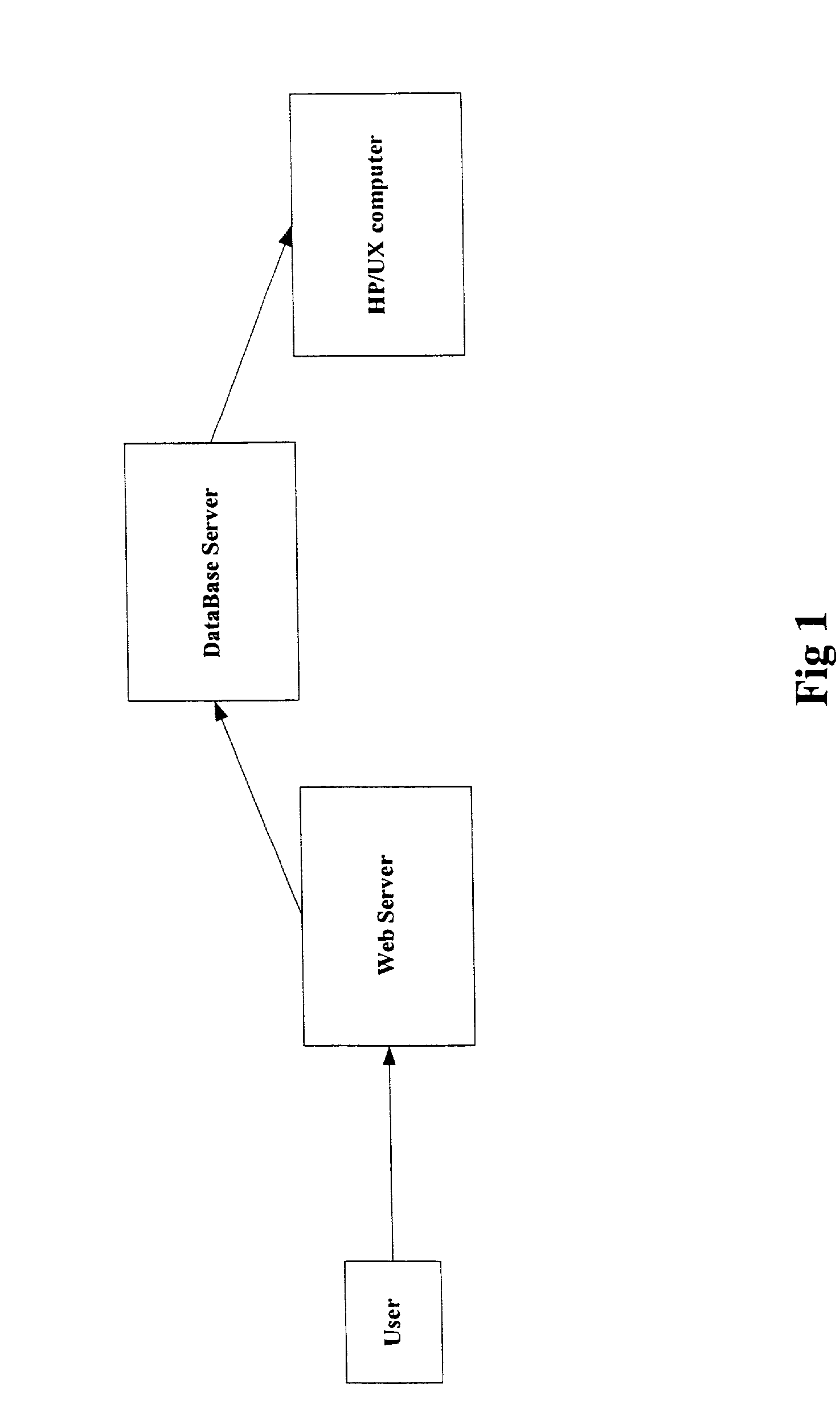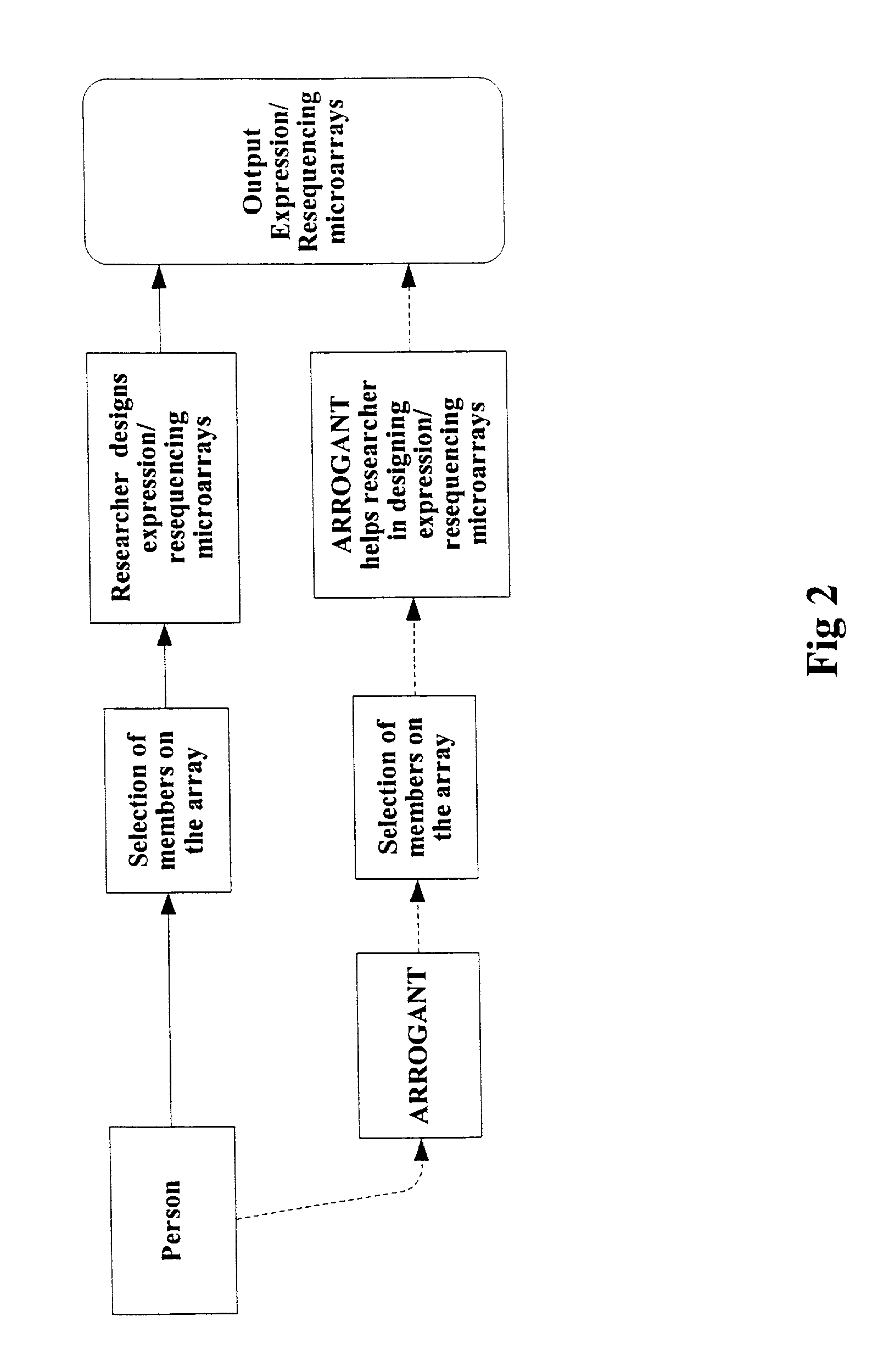Program for microarray design and analysis
a microarray and program technology, applied in the field of array computation and analysis, can solve the problems of manual elimination of redundancy, laborious and time-consuming, and annotation cannot be downloaded in any useful format for working with a large gene collection
- Summary
- Abstract
- Description
- Claims
- Application Information
AI Technical Summary
Benefits of technology
Problems solved by technology
Method used
Image
Examples
first embodiment
[0082] In this first embodiment, the system effects four functionalities. The first functionality is a search function which searches the annotations of the dataset according to a user-defined criterion and outputs a first subset of the dataset restricted by the criterion. The user may select any criterion encompassed by annotations of the dataset(s), including keyword and more concept-based search criteria. Furthermore, the criterion is preferably one of a plurality of user-defined criteria, preferably at least three, more preferably at least five, and may include multiple keywords, such as "cardiac disease", and preferably uses logical operators like `and / or", and the search function searches the annotations of the dataset according to all the criteria and outputs a first subset of the dataset restricted by the criteria.
[0083] The second functionality is a redundancy reducing function which compares the first subset with a first database correlating the sequence identifiers of the...
example
[0106] This design, comparison and analysis modes described above have been implemented in the computer tool known as ARROGANT. ARROGANT, in one integrated package, assists in compiling a gene collection starting from keywords and their synonyms, designs primers, looks for commercially available clones and designs probes for resequencing. Its focus is to enable the researcher to simultaneously work with a large collection of genes, their information and experimental data. Once a gene collection has been refined by the researcher (the design mode), ARROGANT then annotates the collection from many databases (the annotation mode). Experimental data can then be analyzed by association with this information (sequence annotations, pathways, homology, artifacts etc.) to aid in drawing scientific conclusions. In a large gene collection, sequence redundancies and naming differences can be resolved by ARROGANT (the collection comparison mode). ARROGANT calls upon the resources of several comp...
PUM
 Login to View More
Login to View More Abstract
Description
Claims
Application Information
 Login to View More
Login to View More - R&D
- Intellectual Property
- Life Sciences
- Materials
- Tech Scout
- Unparalleled Data Quality
- Higher Quality Content
- 60% Fewer Hallucinations
Browse by: Latest US Patents, China's latest patents, Technical Efficacy Thesaurus, Application Domain, Technology Topic, Popular Technical Reports.
© 2025 PatSnap. All rights reserved.Legal|Privacy policy|Modern Slavery Act Transparency Statement|Sitemap|About US| Contact US: help@patsnap.com



